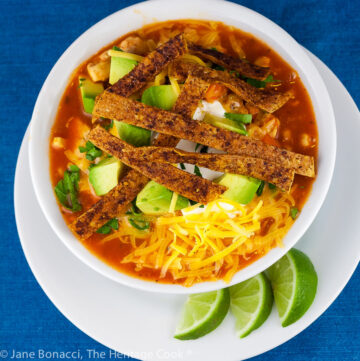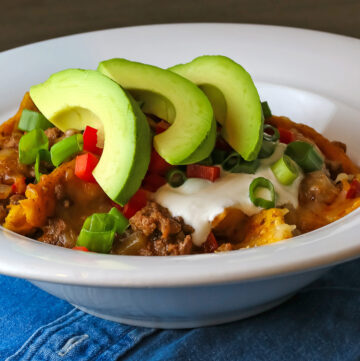In my career I was lucky enough to work for a Belgian company and went over to Brussels a few times. If you ever have the opportunity, go and experience the beauty of the Western European people and countryside. One of my favorite days was spent in Bruges, a medieval town where little has changed in hundreds of years. We ate cheese fondue and sipped a beer alongside one of the canals, shopped for their world famous lace, and soaked up the history of the town. Along with what I think are the world’s greatest French fries (pommes frites) and amazing chocolates, Belgian’s are extremely proud of their beers. And for good reason, they are fantastic!
Beer has been brewed in Belgium since the Middle Ages. It has approximately 125 breweries, and in Europe, only Germany, France, and the United Kingdom have more. Belgium produces about 800 beers regularly and when you add in special runs it is about 8700! To put this into perspective, a country roughly the size of Maryland has nearly as many breweries as countries approximately the size of Montana, Texas, and Oregon respectively!
Another thing that is unique to Belgium is that virtually all the beers made have their own specially designed glasses imprinted with their logo or name. The brewery selects the shape of the glass to accentuate the unique qualities of their beers. Can you imagine the overhead needed to stock all those beers and glasses? The average Belgian drinks 93 litres of beer a year (about 25 gallons) so it isn’t surprising that they would find ways to incorporate it into their food.
There are a couple of guidelines when cooking with alcohol. First and foremost, if you don’t enjoy drinking it, don’t cook with it! If you don’t like the flavor when you first taste it, you certainly aren’t going to like it once it is cooked! The second is that even though the vast majority of alcohol disappears during the cooking process (leaving the delicious flavor behind), some remains. Generally, the longer something cooks or the higher temperature it reaches, the less alcohol will be in the final dish. If you have people who are watching their intake or children who are picky eaters, you can use a little vinegar and broth to make up the difference. It won’t be the same, but it will still taste great.
With this recipe you are going to use a common technique to thoroughly brown the beef. It calls for you to cook the beef in batches. The reason you do this is to make sure the meat browns without steaming. If the pieces are too close together they won’t develop the deep brown crust you’re looking for.
Once all the beef is browned, you want to capture the flavor that has developed in the pan. The way to do this is to deglaze the pan. That is a fancy way of saying that when you add a liquid to the hot pan, everything on the bottom releases and creates the base for a deeply flavored pan sauce. The perfect utensil for this is a flat-sided wooden spoon like this one from Mario Batali.
No matter what you’re cooking, always remember that as you go along you have opportunities to layer and develop more intense flavor. For example, add some dried herbs during cooking to infuse the flavor and then add some freshly chopped herbs right at the end for a pop of fresh flavor. Dried herbs stand up to long cooking so they can be added early in the cooking process. Fresh herbs lose their potency in heat so you want to add them just before serving.
If you want to increase the volume of vegetables in this stew, go right ahead. Obviously carrots and potatoes are standard in American stews, but you can also add peas, corn, tomatoes, etc. Increase the stock appropriately. With football season in full swing, the days getting shorter, and cooling weather on its way, a hearty beef stew is perfect for dinner. I hope you enjoy this version of my tribute to Belgium!
Jane’s Tips and Hints:
To offset the bitterness of beer (or other bitter ingredients), some use a 1/4 tsp of sugar, but you can also use honey, agave, and fruit juice. In this recipe I have added prunes to balance the flavors. You can also use raisins or currants if that is what you have in your cupboard.
Kitchen Skill: Easily cutting ingredients to the same size
Why: To make ingredients cook evenly and easy to eat
How: When you are cutting ingredients to a specific dimension, use a ruler to measure the first piece and then use it to quickly know how big to cut the remaining ingredients. And when you are using a knife, always keep the tip of your knife touching the cutting board. This helps you control the knife better and reduces your chances of cutting yourself. Use a rocking motion and move the knife blade through the food, slicing instead of striking the food with the blade. You should never hear bang, bang, bang! If you use a knife like a cleaver (holding it high and striking the food with great force) you will damage the edge and have to sharpen it much more often. Take care of your knives and they will take care of you!


- 3-1/2 lbchuck blade or flatiron steaks or chuck eye roast, about 1-inch thick, trimmed of gristle and fat and cut into 1-inch pieces
- Table salt and ground black pepper
- 3 tbspolive oilor rendered bacon fat
- 3 medium onions,halved & sliced about 1/4” thick - will yield about 8 cups
- 1 tbsptomato paste
- 2 medium clovesgarlic, minced or pressed thru garlic press (about 2 tsp)
- 1/4 cup all-purpose flour
- 3 large carrots, sliced, optional
- 1-1/2 cupslow-sodium beef broth
- 1-1/2 cups(12 oz) dark or amber-colored Belgian ale (you can also substitute red wine)
- 4 sprigsfresh thyme leaves, tied with kitchen twine (makes it easier to retrieve)
- 2 bay leaves
- 1 tbsp sherry vinegar
- 1/2 cup whole prunes, pitted and chopped (leave out if not using beer)
- Buttered egg noodles, or boiled or mashed potatoes, for serving
- Adjust oven rack to second from the bottom level. Preheat oven to 300°F. Rinse and dry beef thoroughly with paper towels, then season generously with salt and pepper on all sides.
- Heat 2 tsp oil in large cast iron Dutch oven over medium-high heat until beginning to smoke; add 1/3 of beef to pot. Cook without moving pieces until well browned, 2 to 3 minutes. Reduce heat to medium and using tongs, turn each piece and continue cooking until second side is well browned, about 5 minutes longer. Transfer browned beef to medium bowl.
- Add an additional 2 tsp oil and half of remaining beef. When completely browned, transfer to bowl. Repeat once more with another 2 tsp oil and the remaining beef. Transfer to bowl.
- Add remaining 1 tbsp oil to the Dutch oven and reduce heat to medium-low. Add onions, 1/2 tsp salt, and tomato paste; cook, scraping bottom of pot with wooden spoon to loosen browned bits (onions will release some moisture), about 5 minutes. Increase heat to medium and continue to cook, stirring occasionally, until onions are lightly browned, 12 to 14 minutes. Stir in garlic and cook until fragrant, about 30 seconds. Add flour and stir until onions are evenly coated and flour is lightly browned, about 2 minutes. You want to cook out any raw flour flavor.
- Stir in broth, scraping pan bottom to loosen browned bits. Stir in beer, thyme, bay leaves, vinegar, all the browned beef with any accumulated juices in the bowl, and salt and pepper to taste. Increase heat to medium-high and bring to full simmer, stirring occasionally. Cover partially and transfer to the oven.
- After 1-1/2 hours, stir in chopped prunes. Cook until fork inserted into beef meets very little resistance, about 30 to 60 additional minutes, for a total of about 2 to 2-1/2 hours cooking time. Discard thyme and bay leaves. Adjust seasonings with salt and pepper to taste and serve over noodles or potatoes.
- Will hold, refrigerated, in an airtight container for up to 4 days. Reheat over medium-low heat.
Thank You!








